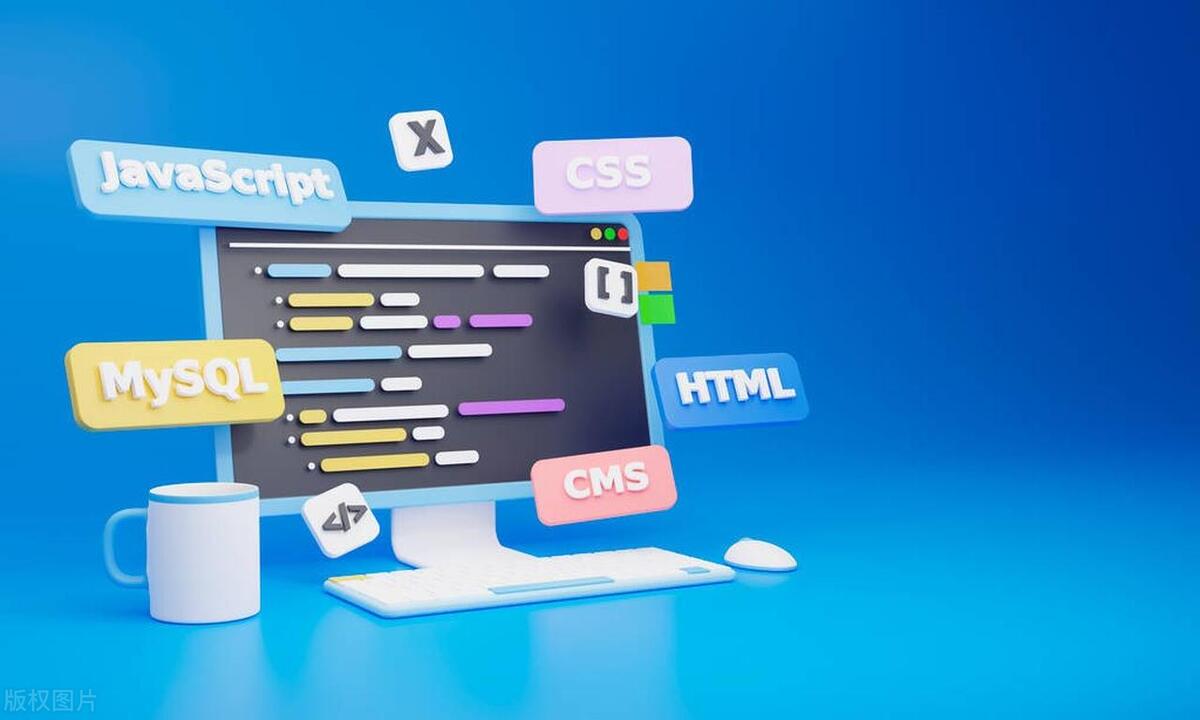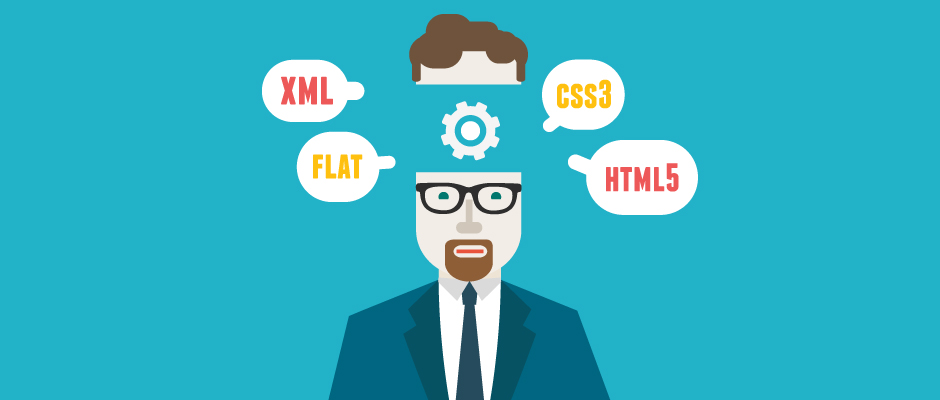 Web Front-end
Web Front-end
 Front-end Q&A
Front-end Q&A
 Creating Sticky Navigation Headers or Sidebars with CSS position: sticky
Creating Sticky Navigation Headers or Sidebars with CSS position: sticky
Creating Sticky Navigation Headers or Sidebars with CSS position: sticky
Jul 09, 2025 am 02:20 AMposition: sticky The key to implementing a sticky navigation bar or sidebar is to correctly set positioning properties and understand usage restrictions. 1. It must be used with top, bottom, left or right, and the parent container cannot have properties such as overflow: hidden, transform or filter; 2. When used in the navigation bar, z-index and background colors must be set to ensure visibility and readability, and pay attention to the hierarchical relationship of multiple sticky elements and content occlusion issues; 3. When implementing the sidebar, you need to set the top value and height: fit-content to prevent the screen from being full, and scrolling support should be added if necessary; 4. Pay attention to compatibility. Mainstream browsers have good support, but IE does not support it, and alternatives are required to avoid common style traps. Only by mastering these key points can you ensure sticky works as expected.

Using CSS's position: sticky to implement sticky navigation bar or sidebar is a practical and not difficult to implement. It allows an element to "stick" on the screen when scrolling a page, such as common top navigation or side menus. The key is to understand its usage conditions and limitations, otherwise it is easy to "how it doesn't take effect".

1. Basic grammar and necessary conditions
position: sticky looks simple, but must be used with top , bottom , left or right , otherwise it will fail. For example:

.sticky-nav {
position: sticky;
top: 0;
} After writing this way, .sticky-nav will be fixed to the screen when scrolling to 0px from the top.
But note:
- It must have a clear positioning value (such as
top: 0) and cannot just writeposition: sticky. - The parent container cannot be
overflow: hiddenortransform,filterand other attributes, otherwise sticky will be disabled. - The sticky element is positioned relative to the most recent scrolling ancestor element, rather than the entire page.
2. Common practices used on the navigation bar
The top navigation bar is the most common application scenario. You can put it at the top of the page so that it is always visible while scrolling:

<nav class="sticky-nav">...</nav>
.sticky-nav {
position: sticky;
top: 0;
z-index: 1000;
background: white;
} z-index is added to prevent being covered by other content, and the background color is to make the content readable (especially when scrolling).
In practice, you may encounter:
- When the page has multiple sticky elements, they are overwritten in turn
- The contents below the navigation bar may be blocked, you can use
margin-topto adjust the spacing.
3. How to achieve sticky effect in the sidebar
In addition to top navigation, the sidebar can also be fixed with sticky. Structurally, there is usually a left area plus the main content area:
<div class="container"> <aside class="sidebar">This is the sidebar</aside> <main class="content">Main content</main> </div>
The corresponding CSS can be written like this:
.sidebar {
position: sticky;
top: 20px; /* Start to fix at a certain distance from the top*/
height: fit-content; /* Prevent the screen height from being full*/
} This way, when the user scrolls the page, the sidebar stops at the right position and does not exceed the content height.
Tips:
- Add
max-heightandoverflow-y: autoto.sidebarto keep scrolling under long content - Pay attention to the layout width to avoid sticky elements affecting the main content layout
4. Compatibility and precautions
Although mainstream browsers support position: sticky , it is not applicable in older versions (such as IE). If you need to be compatible with these environments, you may have to use JavaScript to simulate or consider alternatives.
Some other places that are prone to pitfalls:
- Forgot to set
toporleft, resulting in invalid - The parent container has been set to
overflow: hidden, sticky is invalid - The scroll container is not the viewport itself (such as scrolling inside a div), and sticky behavior will be different
Basically that's it. The key to using position: sticky is to figure out the context and style limitations it depends on. It looks simple, but if the details are not handled properly, problems will be easily arise.
The above is the detailed content of Creating Sticky Navigation Headers or Sidebars with CSS position: sticky. For more information, please follow other related articles on the PHP Chinese website!

Hot AI Tools

Undress AI Tool
Undress images for free

Undresser.AI Undress
AI-powered app for creating realistic nude photos

AI Clothes Remover
Online AI tool for removing clothes from photos.

Clothoff.io
AI clothes remover

Video Face Swap
Swap faces in any video effortlessly with our completely free AI face swap tool!

Hot Article

Hot Tools

Notepad++7.3.1
Easy-to-use and free code editor

SublimeText3 Chinese version
Chinese version, very easy to use

Zend Studio 13.0.1
Powerful PHP integrated development environment

Dreamweaver CS6
Visual web development tools

SublimeText3 Mac version
God-level code editing software (SublimeText3)

Hot Topics
 How can CSS be used to implement dark mode theming on a website?
Jun 19, 2025 am 12:51 AM
How can CSS be used to implement dark mode theming on a website?
Jun 19, 2025 am 12:51 AM
ToimplementdarkmodeinCSSeffectively,useCSSvariablesforthemecolors,detectsystempreferenceswithprefers-color-scheme,addamanualtogglebutton,andhandleimagesandbackgroundsthoughtfully.1.DefineCSSvariablesforlightanddarkthemestomanagecolorsefficiently.2.Us
 Can you explain the difference between em, rem, px, and viewport units (vh, vw)?
Jun 19, 2025 am 12:51 AM
Can you explain the difference between em, rem, px, and viewport units (vh, vw)?
Jun 19, 2025 am 12:51 AM
The topic differencebetweenem, Rem, PX, andViewportunits (VH, VW) LiesintheirreFerencepoint: PXISFixedandbasedonpixelvalues, emissrelative EtothefontsizeFheelementoritsparent, Remisrelelatotherootfontsize, AndVH/VwarebaseDontheviewporttimensions.1.PXoffersprecis
 What are the key differences between inline, block, inline-block, and flex display values?
Jun 20, 2025 am 01:01 AM
What are the key differences between inline, block, inline-block, and flex display values?
Jun 20, 2025 am 01:01 AM
Choosing the correct display value in CSS is crucial because it controls the behavior of elements in the layout. 1.inline: Make elements flow like text, without occupying a single line, and cannot directly set width and height, suitable for elements in text, such as; 2.block: Make elements exclusively occupy one line and occupy all width, can set width and height and inner and outer margins, suitable for structured elements, such as; 3.inline-block: has both block characteristics and inline layout, can set size but still display in the same line, suitable for horizontal layouts that require consistent spacing; 4.flex: Modern layout mode, suitable for containers, easy to achieve alignment and distribution through justify-content, align-items and other attributes, yes
 What are CSS Houdini APIs, and how do they allow developers to extend CSS itself?
Jun 19, 2025 am 12:52 AM
What are CSS Houdini APIs, and how do they allow developers to extend CSS itself?
Jun 19, 2025 am 12:52 AM
CSSHoudini is a set of APIs that allow developers to directly manipulate and extend the browser's style processing flow through JavaScript. 1. PaintWorklet controls element drawing; 2. LayoutWorklet custom layout logic; 3. AnimationWorklet implements high-performance animation; 4. Parser&TypedOM efficiently operates CSS properties; 5. Properties&ValuesAPI registers custom properties; 6. FontMetricsAPI obtains font information. It allows developers to expand CSS in unprecedented ways, achieve effects such as wave backgrounds, and have good performance and flexibility
 What is the significance of Vue's reactivity transform (experimental, then removed) and its goals?
Jun 20, 2025 am 01:01 AM
What is the significance of Vue's reactivity transform (experimental, then removed) and its goals?
Jun 20, 2025 am 01:01 AM
ReactivitytransforminVue3aimedtosimplifyhandlingreactivedatabyautomaticallytrackingandmanagingreactivitywithoutrequiringmanualref()or.valueusage.Itsoughttoreduceboilerplateandimprovecodereadabilitybytreatingvariableslikeletandconstasautomaticallyreac
 How can CSS gradients (linear-gradient, radial-gradient) be used to create rich backgrounds?
Jun 21, 2025 am 01:05 AM
How can CSS gradients (linear-gradient, radial-gradient) be used to create rich backgrounds?
Jun 21, 2025 am 01:05 AM
CSSgradientsenhancebackgroundswithdepthandvisualappeal.1.Startwithlineargradientsforsmoothcolortransitionsalongaline,specifyingdirectionandcolorstops.2.Useradialgradientsforcirculareffects,adjustingshapeandcenterposition.3.Layermultiplegradientstocre
 How can internationalization (i18n) and localization (l10n) be implemented in a Vue application?
Jun 20, 2025 am 01:00 AM
How can internationalization (i18n) and localization (l10n) be implemented in a Vue application?
Jun 20, 2025 am 01:00 AM
InternationalizationandlocalizationinVueappsareprimarilyhandledusingtheVueI18nplugin.1.Installvue-i18nvianpmoryarn.2.CreatelocaleJSONfiles(e.g.,en.json,es.json)fortranslationmessages.3.Setupthei18ninstanceinmain.jswithlocaleconfigurationandmessagefil
 How does provide and inject allow for deep component communication without prop drilling in Vue?
Jun 20, 2025 am 01:03 AM
How does provide and inject allow for deep component communication without prop drilling in Vue?
Jun 20, 2025 am 01:03 AM
In Vue, provide and inject are features for directly passing data across hierarchical components. The parent component provides data or methods through provide, and descendant components directly inject and use these data or methods through inject, without passing props layer by layer; 2. It is suitable for avoiding "propdrilling", such as passing global or shared data such as topics, user status, API services, etc.; 3. Note when using: non-responsive original values ??must be wrapped into responsive objects to achieve responsive updates, and should not be abused to avoid affecting maintainability.





